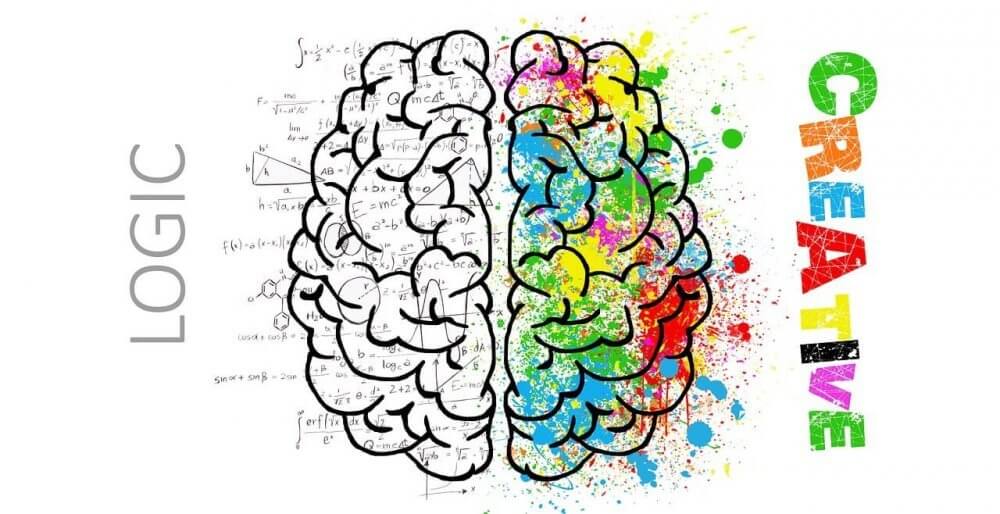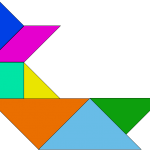All You Need To Know About Right Brain Training in Singapore
Published on 25 May 2018 by Edu Aid | For Parents | Preschool

Singapore parents are turning to the right brain training development centres for their toddlers to accelerate their cognitive development to raise super smart babies.
Early childhood research indicates that the golden development period of a child’s brain is in the first three years. Nurturing the right brain early will unlock the child’s innate potential for increased intuitiveness, spatial awareness and creativity.
Most parents would seize this opportunity to maximise their child’s brain development, social-emotional growth, and cognitive skills during this critical time. It is no surprise that parents are flocking to centres in Singapore that adopt scientific right-brain training methods, such as Heguru and Shichida, to give their children an edge.
What is right-brain training?
Let’s start by understanding that our brains are divided into the left and right hemispheres. The left hemisphere is generally tasked with logical thinking, mathematics, and language. The right brain, however, governs more creative skills such as music, creativity, resilience, and artistry.
Right-brain training refers to a series of mental exercises designed to stimulate the right hemisphere of the child’s brain. Each centre would have a different proprietary method backed by scientific research.
For instance, some methods used by right brain training centres in Singapore include eye training, where toddlers are trained to master their eye movements to stimulate their visual tracking and processing ability to improve connections between the eyes and the brain.
While other right-brain training centres in Singapore use linking memory games, where children learn to remember the sequence of unrelated items or spatial puzzles that require them to interpret and complete shapes.
Some right-brain training activities include music classes stimulating the auditory sense and helping children explore their creativity. It also involves play-based learning activities that help promote logical and creative thinking.
How to train your baby’s right brain at home: training activities
Before you begin right brain training at home, it is essential to remember that the right brain is the emotional centre of our brains. In other words, it is responsible for the subconscious and intuitive senses. To ensure successful right-brain training, it is necessary to cultivate a secure emotional attachment between the child and their parents or caregiver – the right brain only functions at its optimal level when there is a strong connection between you and your child.
Generally, the most effective time for right brain training activities is from birth to three years of age, as this is the period when the right portion of the brain develops most rapidly, and information is absorbed like a sponge.
From age four onwards, the dominance will naturally shift to the left brain, establishing the neuron’s connections between the two-brain hemisphere. Therefore, taking advantage of the early years and starting right-brain training as soon as possible is essential.
It isn’t always necessary to send your child to a brain development centre. Here are some activities you can do at home with your toddler that will encourage right-brain development.
Fast speed flashcards
Fast-speed flash cards help stimulate a child’s photographic memory and visual processing skills as they associate spoken words with images. It is called fast-speed flashcards because it requires an adult to flash a set of cards to the child at high speed, below one second per card while saying the words out loud.
The purpose is to activate the child’s right brain, which processes images, and the left brain, which processes language, to develop speed-reading skills.
Eye training exercise
One of the best right-brain training activities is eye muscle training. Start by asking the children to track your finger with their eyes as you move it up and down, left and right and in all directions. You can also draw a line on paper with colourful crayons or markers while asking the child to track and follow the line.
This helps to improve your child’s ability to focus and hand-eye coordination.
Mandala memory activities
For those unfamiliar with the term, a mandala is a circular figure with an intricate, symmetrical and colourful design. It is often kaleidoscopic with contrasting colours. Due to their geometric pattern, mandalas are excellent for developing a child’s photographic memory.
 Print out a few mandalas from the internet. Before printing it out, ensure the design is simple enough, as this will overwhelm your child. A red circle with a yellow starfish in the middle can serve this purpose. Now print an uncoloured version of the same shape.
Print out a few mandalas from the internet. Before printing it out, ensure the design is simple enough, as this will overwhelm your child. A red circle with a yellow starfish in the middle can serve this purpose. Now print an uncoloured version of the same shape.
Get your child to sit in front of you. Show the coloured version of the mandala for five seconds, and ask your child to close his eyes and recall what he has just seen. Allow them to open their eyes and present them with the colourless printout. Ask them to colour the mandala according to their memory.
Photographic memory training
Right-brain training activities almost always involve photographic memory training. This activity helps children develop the ability to tap into stored memory from their subconscious mind, harnessing their ability to recognise and process information quickly.
For this activity, you can use either flashcards or photographs. Show your child one card or photograph at a time. After five seconds, let your child close their eyes and try to recall the objects in the picture in as much detail as possible.
Ask your child to verbally describe or draw a picture of the scene. Once completed, compare the list with the actual item to check for accuracy. Repeating this activity regularly, your child can develop their photographic memory and increase their learning ability.
Conclusion
Parents can easily carry out right brain training at home with their toddlers by researching activities on the internet, reading about them in books or magazines, and implementing them consistently.
For time-starved parents, enrolling in a structured weekly right brain enrichment programme is an option to ensure regular practice and development.
When considering enrolling in such programmes, it’s a good idea to talk to other parents who have experience with them to check whether their children have reaped benefits. These programmes often come with a high cost and require a significant commitment to see results.
Besides right brain training, parents can complement their children’s development and bridge academic gaps by seeking support from an excellent preschool home tutor.
Contact us if you want to engage a reliable and committed preschool tutor for your child. We hope to help your child holistically reach their full learning potential.





